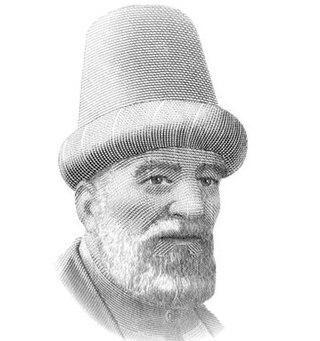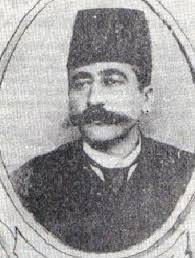
The waltz, meaning "to roll or revolve") is a ballroom and folk dance, in triple, performed primarily in closed position. Along with the ländler and allemande, the waltz was sometimes referred to by the generic term German Dance in publications during the late 18th and early 19th centuries.
The roots of traditional music in Turkey span across centuries to a time when the Seljuk Turks migrated to Anatolia and Persia in the 11th century and contains elements of both Turkic and pre-Turkic influences. Much of its modern popular music can trace its roots to the emergence in the early 1930s drive for Westernization.

Mehmet Fuat Köprülü, also known as Köprülüzade Mehmed Fuad, was a highly influential Turkish sociologist, Turkologist, scholar, Minister of Foreign Affairs and Deputy Prime Minister of the Republic of Turkey. A descendant of the prominent Köprülü family, Fuat Köprülü was a key figure in the intersection of scholarship and politics in early 20th century Turkey.

The bağlama or saz is a family of plucked string instruments and long-necked lutes used in Ottoman classical music, Turkish folk music, Turkish Arabesque music, Azerbaijani music, Bosnian music (Sevdalinka), Kurdish music, and Armenian music. It is played in several regions in the world such as Europe, Asia, Black Sea, Caucasus regions and many countries including Syria, Iraq, Iran and Bosnia and Herzegovina. It is commonly used by the ashiks.

The culture of the Ottoman Empire evolved over several centuries as the ruling administration of the Turks absorbed, adapted and modified the various native cultures of conquered lands and their peoples. There was influence from the customs and languages of nearby Islamic societies such as Jordan, Egypt and Palestine, while Persian culture had a significant contribution through the Seljuq Turks, the Ottomans' predecessors. Despite more recent amalgamations, the Ottoman dynasty, like their predecessors in the Sultanate of Rum and the Seljuk Empire were influenced by Persian culture, language, habits, customs and cuisines.Throughout its history, the Ottoman Empire had substantial subject populations of Orthodox subjects, Armenians, Jews and Assyrians, who were allowed a certain amount of autonomy under the millet system of the Ottoman government, and whose distinctive cultures were adopted and adapted by the Ottoman state.
The Turkish makam is a system of melody types used in Turkish classical music and Turkish folk music. It provides a complex set of rules for composing and performance. Each makam specifies a unique intervalic structure and melodic development (seyir). Whether a fixed composition or a spontaneous composition, all attempt to follow the melody type. The rhythmic counterpart of makam in Turkish music is usul.

Ottoman music or Turkish classical music is the tradition of classical music originating in the Ottoman Empire. Developed in the palace, major Ottoman cities, and Sufi lodges, it traditionally features a solo singer with a small to medium-sized instrumental ensemble.
In Ottoman classical music, usul is an underlying rhythmic cycle that complements the melodic rhythm and sometimes helps shape the overall structure of a composition. An usul can be as short as two beats or as long as 128 beats. Usul is often translated as "meter", but usul and meter are not exactly the same. Both are repeating rhythmic patterns with more or less complex inner structures of beats of differing duration and weight. But a student learning Turkish music in the traditional meşk system first memorizes the usul kinetically by striking the knees with the hands. The student then sings the vocal or instrumental composition while performing the underlying usul. This pedagogical system helps the student memorize the composition while internalizing the underlying rhythmic structure.

Turkish folk music is the traditional music of Turkish people living in Turkey influenced by the cultures of Anatolia and former territories in Europe and Asia. Its unique structure includes regional differences under one umbrella. It includes popular music from the Ottoman Empire era. After the foundation of the Turkish Republic in 1923, Turkish President Mustafa Kemal Atatürk ordered a wide-scale classification and archiving of samples of Turkish folk music from around the country, which, from 1924 to 1953 collected more than 10,000 folk songs. Traditional folk music was combined with Western harmony and musical notation to create a more modern style of popular Turkish music.

Mustafa Itri, more commonly known as Buhurizade Mustafa Itri, or just simply Itri was an Ottoman-Turkish musician, composer, singer and poet. With over a thousand works to his name, although only about forty of these have survived to this day, he is regarded as the master of Turkish classical music. In 2012, due to the 300th anniversary of Itri's death, the UNESCO declared 2012 the "International Itri Year".

Tevfik Kolaylı, better known by his pen name Neyzen Tevfik, was a Turkish poet, satirist, and neyzen. Tevfik was born in Bodrum and died in Istanbul. In addition to his satire, he composed taksims and saz semais. He used satire against tyranny during the Ottoman period and against those who opposed revolutions during the Republic years. He wrote poems criticising injustice, corruption, and corruption. He was frequently arrested.

Leyla Saz, also called Leyla Hanımefendi (1850–1936), was an Ottoman and later a Turkish composer, poet and writer.

Tatyos Ekserciyan, or Tatyos Efendi, was a famous composer of classical Turkish music, and his works continue to be among the most played and revered examples of the genre.

Tanburi Cemil Bey was an Ottoman tanbur, Turkish tambur, yaylı tambur, kemençe, and lavta virtuoso and composer, who has greatly contributed to the taksim genre in Ottoman classical music. His son, Mesut Cemil Bey, was an equally renowned Turkish tambur virtuoso.
Peşrev or Peshrev is an instrumental form in Ottoman music. It is the name of the first piece of music played during a group performance called a fasıl. It also serves as the penultimate piece of the Mevlevi ayini, a ritual music of the Mevlevi Order, under the name son peşrev, preceding son semai. It usually uses long rhythm cycles, stretching over many measures as opposed to the simpler usul the other major form of instrumental music uses, saz semai.
A teslīm is a refrain in classical Arabic music and Ottoman classical music. It returns several times in the genres of sama'i, peşrev, and saz semaisi. This term is the equivalent to the Ottoman term mülâzeme.
The fasıl is a suite in Ottoman classical music. It is similar to the Arabic nawba and waslah.
The saz semai is an instrumental form in Ottoman classical music. It was typically the closing movement of a fasıl. The saz semai is metered and typically uses the usul called aksak semai.
A yürük semai is a musical form in Ottoman classical music. It was a movement of a fasıl (suite). It is generally composed in an usul of 6/8 or 6/4.
The Fasl-ı Cedid was a musical ensemble of Classical Turkish Music operating within the organization of the Ottoman Imperial Orchestra, specializing in performances of Fasıl.









